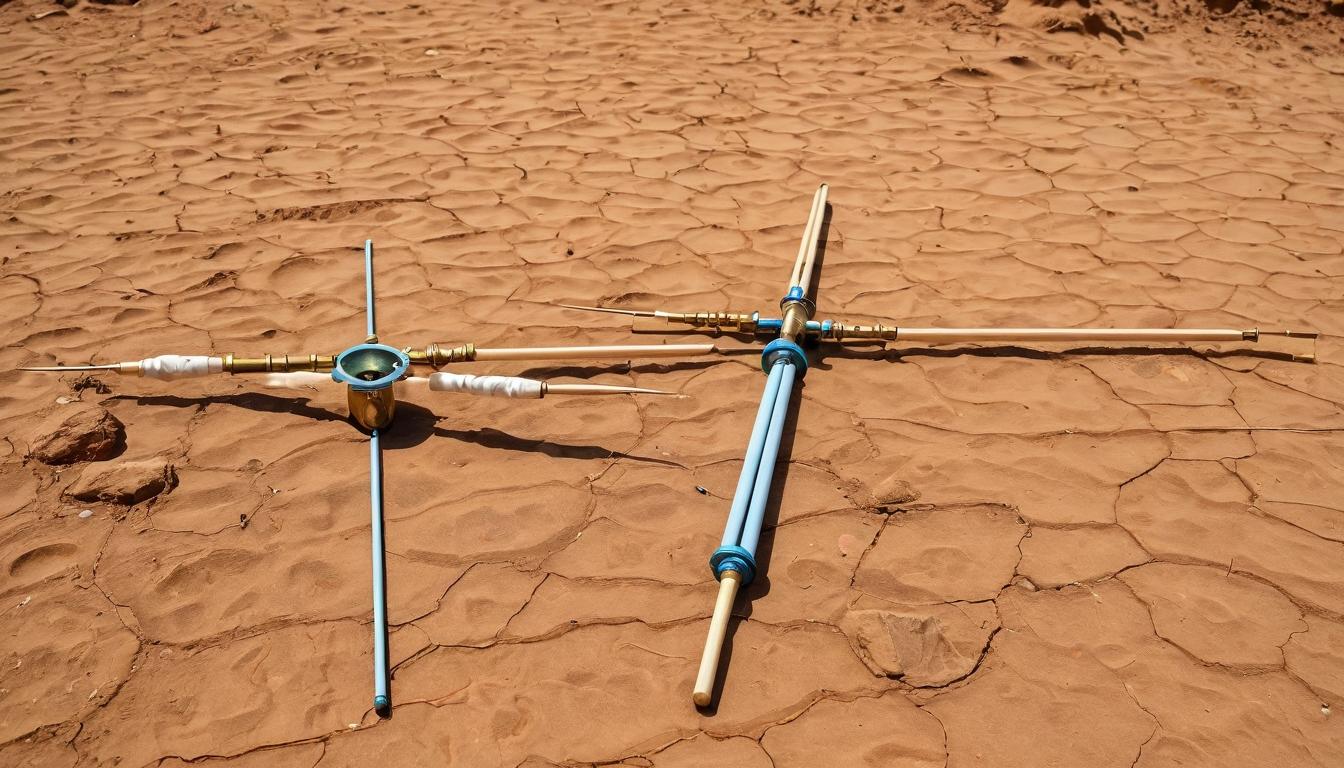The old man moved across the field with the deliberate grace of a heron stalking prey. In his weathered hands, he held two L-shaped copper rods that seemed to have a life of their own. As he approached a particular spot near the ancient oak tree, the rods crossed violently, pointing downward with undeniable force. "Water here," he said simply, as if stating the most obvious fact in the world. "About twenty feet down."
This scene plays out daily across rural landscapes worldwide, where dowsers—those who practice the ancient art of locating underground water, minerals, or other hidden substances—continue a tradition that predates modern geology by thousands of years. While skeptics dismiss dowsing as pseudoscience or mere coincidence, those who practice it speak of something deeper: a tangible connection to the earth's subtle energies that modern science has yet to fully explain.
The history of dowsing reads like a secret thread running through human civilization. Egyptian hieroglyphs depict figures holding forked rods, possibly engaged in dowsing activities. Medieval German miners used divining rods to locate metal ore deposits, calling the practice 'wünschelrute' or 'wishing rod.' During the California Gold Rush, prospectors often employed dowsers in their desperate search for fortune beneath the rugged terrain. Even today, many well-drilling companies quietly hire dowsers before bringing in their expensive equipment, finding that the old methods often prove surprisingly accurate.
Modern dowsers use various tools beyond the traditional forked branch. Copper rods, pendulums, and even specially designed antennas help practitioners amplify what they describe as subtle energy signals from the earth. The methodology varies widely—some dowsers work with maps from a distance, while others need to walk the actual land. What remains consistent is the practitioner's claim of sensing something beyond ordinary perception.
Scientific attempts to explain dowsing have produced conflicting results. Some studies suggest the ideomotor effect—subtle muscle movements guided by unconscious expectations—accounts for the rod movements. Others point to possible sensitivity to electromagnetic fields or subtle geological cues that practitioners detect without conscious awareness. Yet many dowsers report finding water or minerals in locations that defy geological predictions, leaving researchers puzzled.
Learning to dowse, according to practitioners, involves quieting the conscious mind and developing sensitivity to subtle sensations. Many describe it as a form of meditation in motion, where the body becomes an instrument for perceiving what instruments cannot measure. Workshops across the country teach beginners how to hold the rods without tension, how to interpret their movements, and how to distinguish between different types of underground materials.
The applications extend beyond water witching. Modern dowsers claim to locate archaeological sites, track ley lines (hypothetical alignments of ancient sites), assess the health of land, and even find lost objects. Some alternative healers use dowsing techniques to identify energy imbalances in the body, though this remains controversial even within dowsing communities.
Critics rightly demand rigorous evidence, and the dowsing community itself is divided between those who seek scientific validation and those who consider the experience itself sufficient proof. The debate often mirrors larger tensions between empirical science and experiential knowledge—between what can be measured and what can only be felt.
What remains undeniable is the persistence of the practice across cultures and centuries. In an age of satellite imaging and ground-penetrating radar, the simple dowsing rod continues to find devotees. Perhaps there's comfort in the direct, physical connection it represents—a reminder that sometimes the oldest technologies remain relevant not despite their simplicity, but because of it.
The next time you see someone walking slowly across a field holding bent metal rods, pause before dismissing them as eccentric. You might be witnessing a living tradition that connects us to our ancestors and to the earth in ways we're only beginning to understand. In the intersection between ancient wisdom and modern skepticism, dowsing continues to challenge our assumptions about what's possible—and remind us that some mysteries resist easy explanation.
The ancient art of dowsing: how to tap into earth's hidden energies

